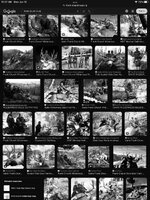I must be an outlier, because almost all the metrics that have been mentioned aren’t even on my list - be careful using large group statistics to describe an individual or small group, because it will always be wrong.
Genetics matter - a nephew showed off his latest buck and thought it was on the small side and said, “It’s not anything like a big Greys River buck.” For his state and area it was an outstanding deer to be proud of.
I plan to hunt pockets that hold old deer - the statistics for how average hunters have killed average deer don’t really matter. Even the age distribution of the entire area doesn’t matter - only the deer in my pocket matter and there will never be a statistic on that.
Animal counts don’t matter - I only need one good one. Percentage of does doesn’t matter - I’m only shooting one with a hoo haw dilly.
Date doesn’t matter, other than I need to know they are in that pocket and not headed down to breed. Well, that’s not true - I much prefer warm weather.
I mostly hunt public land, but the percentage of private doesn’t matter, as long as my pockets are huntable.
How long the season lasts doesn’t matter, although it can change how the area is hunted. 2/3 of the largest deer I’ve seen were on ridges that are huntable only once and that pushes every deer into a different drainage. Some pockets are so small I would only spend one day there and move to another - it’s hit or mis.
Looking at any hunt area on a map, potential pockets are easy to see and quickly circled for round 1 - after an entire area is looked over, going back over them in round two will eliminate many - only then can a plan be made. Every part of what makes that entire hunt area interesting is summed up in that handful of pockets. Other hunt areas can similarly be summarized, and only then compared as to which to focus on first.

